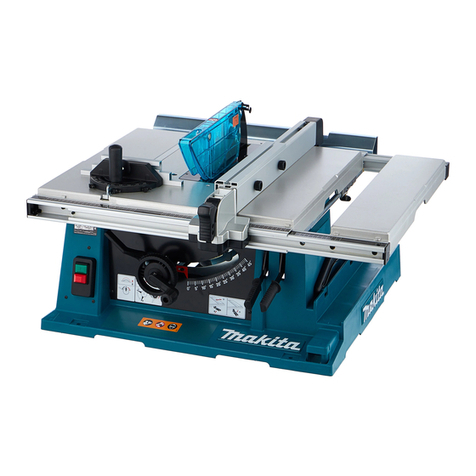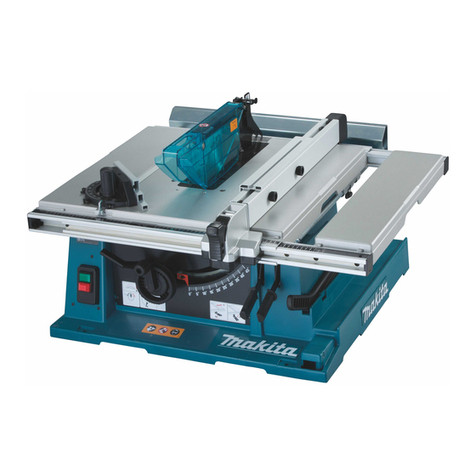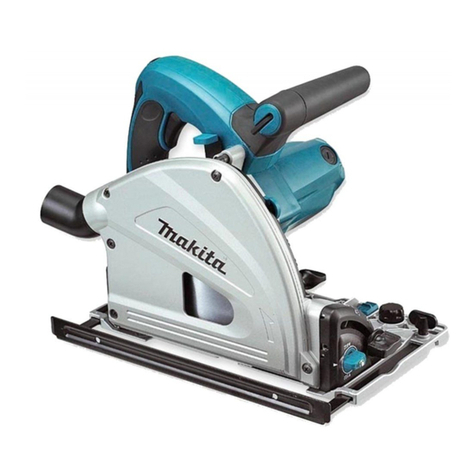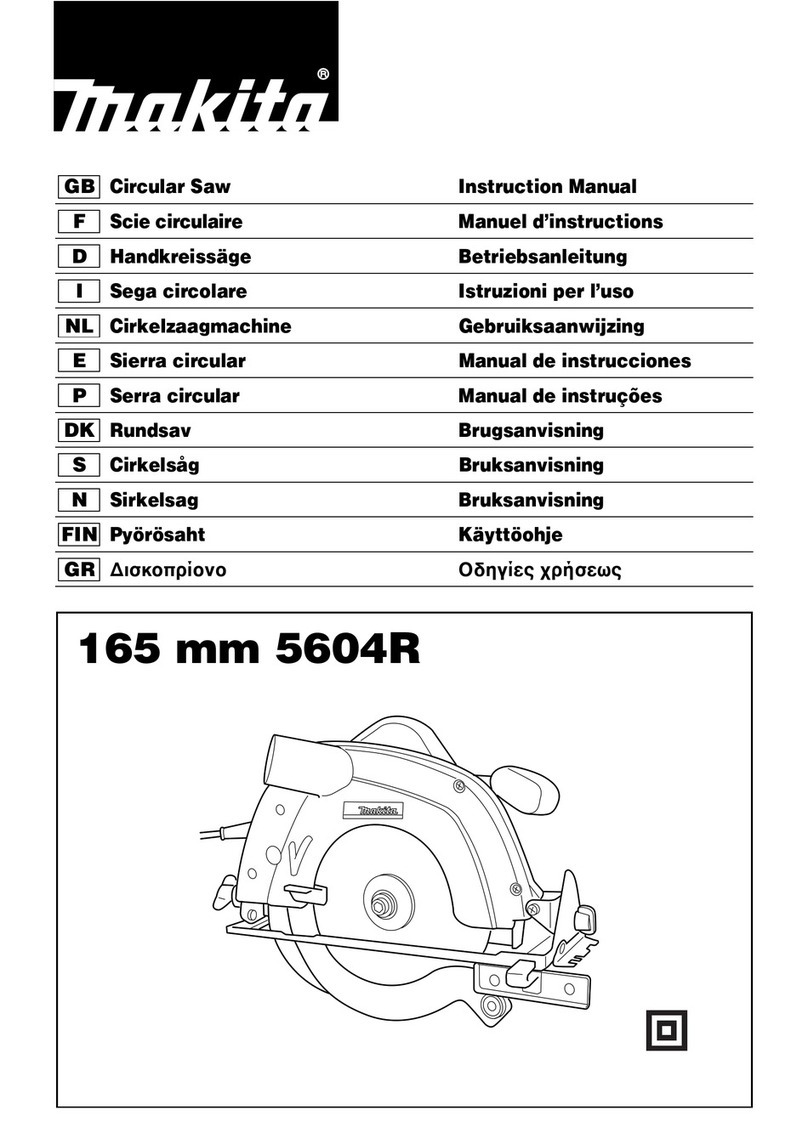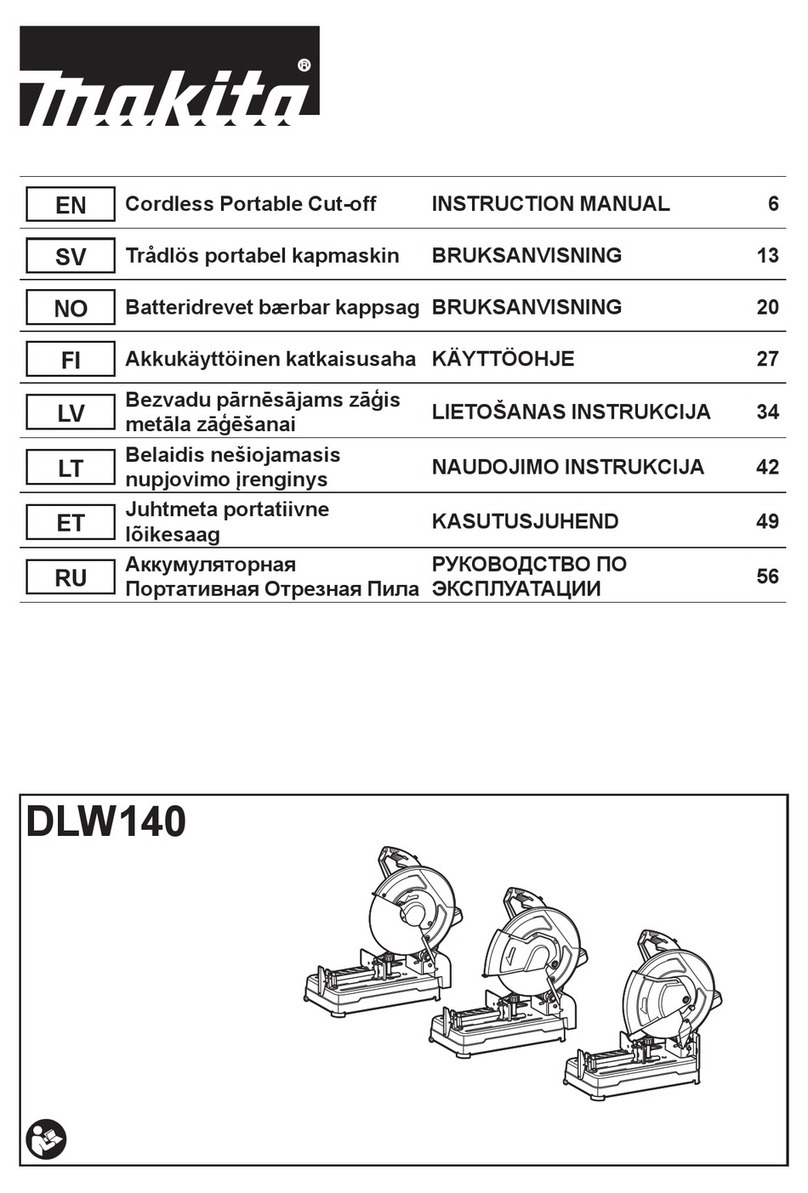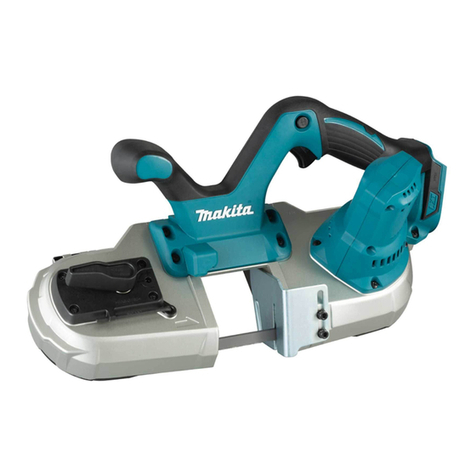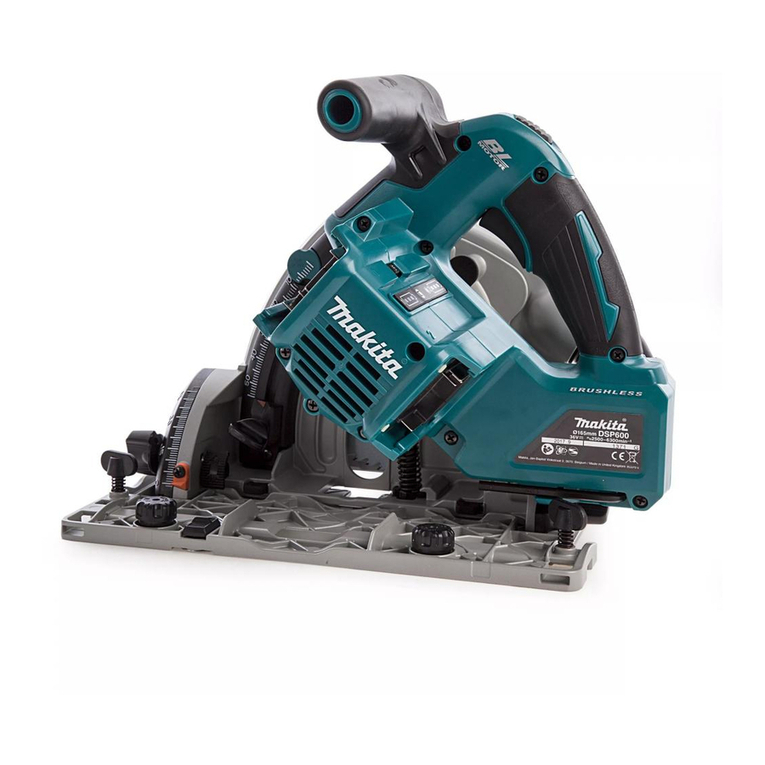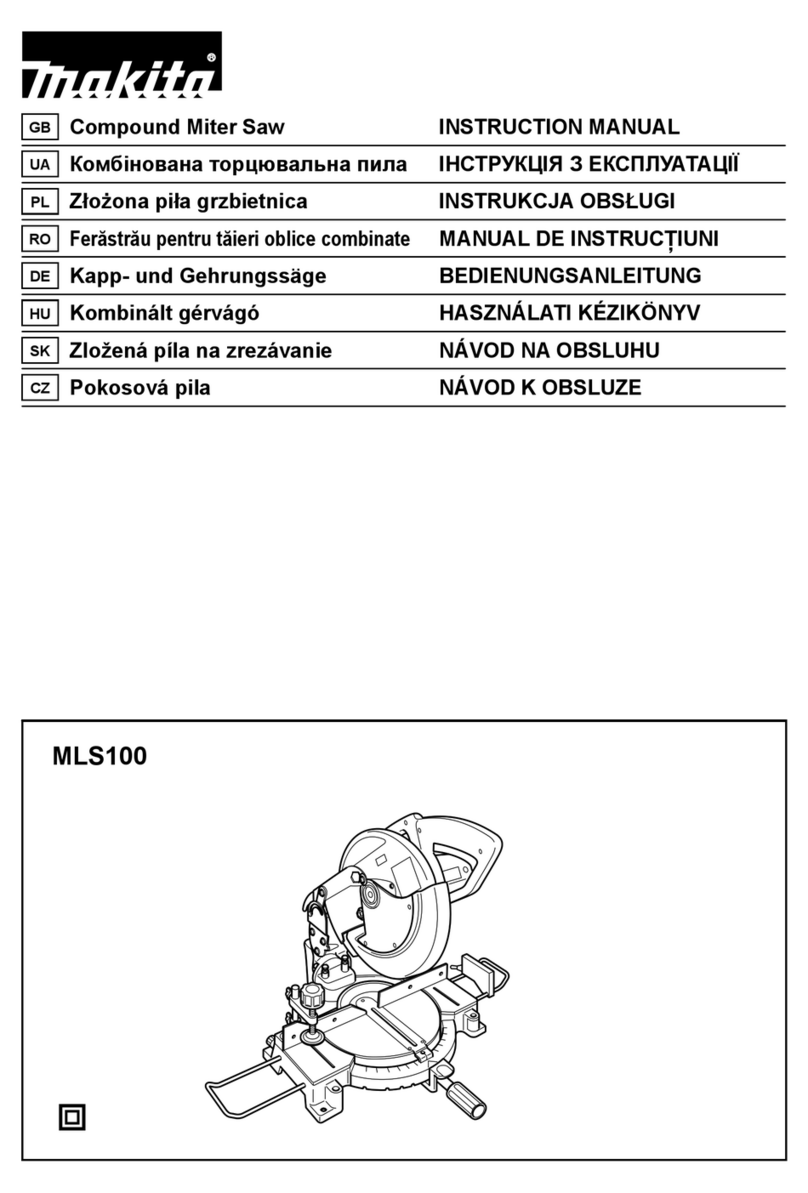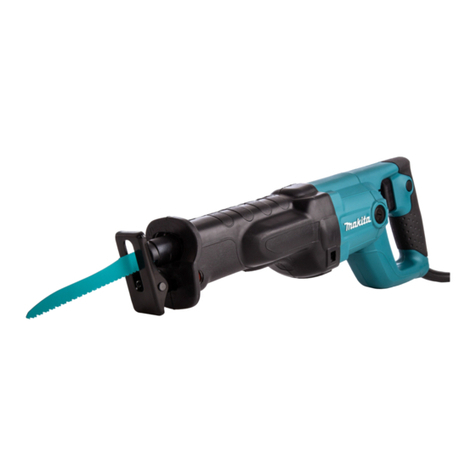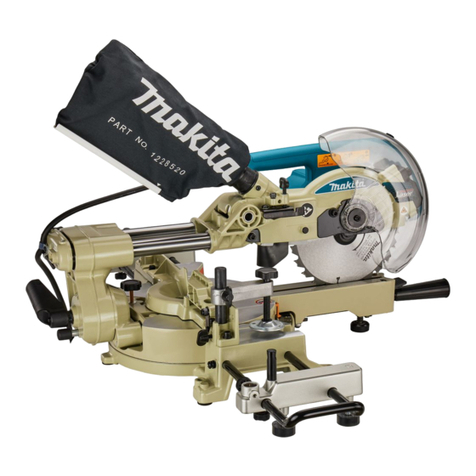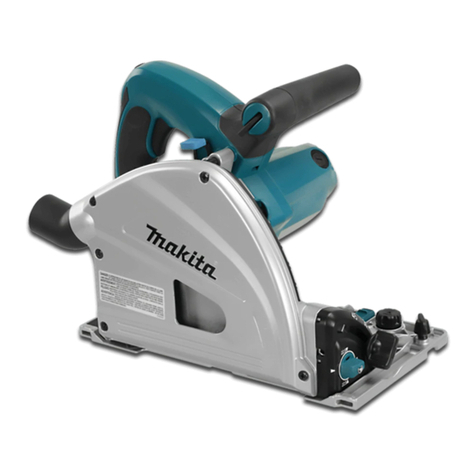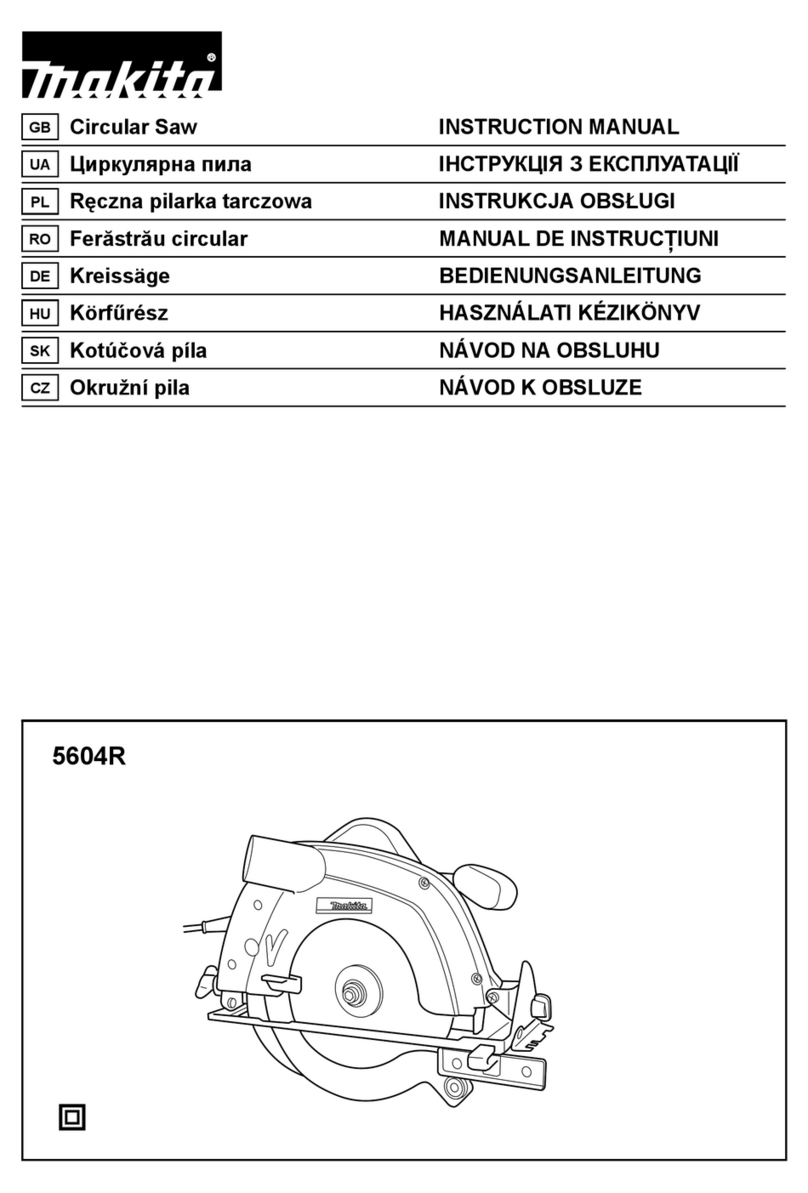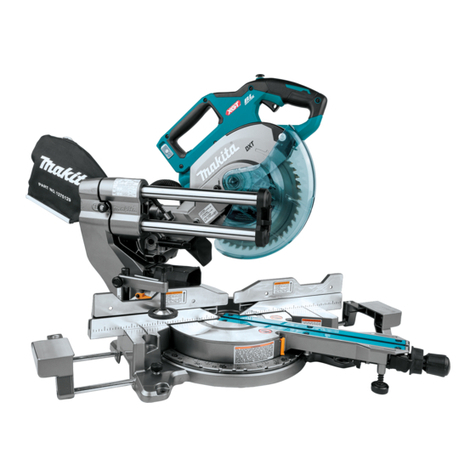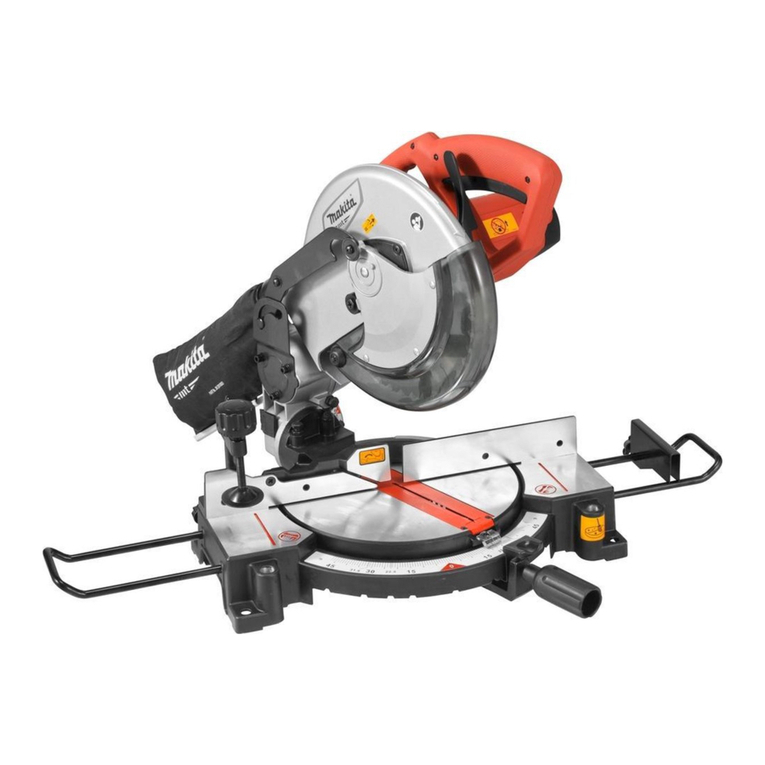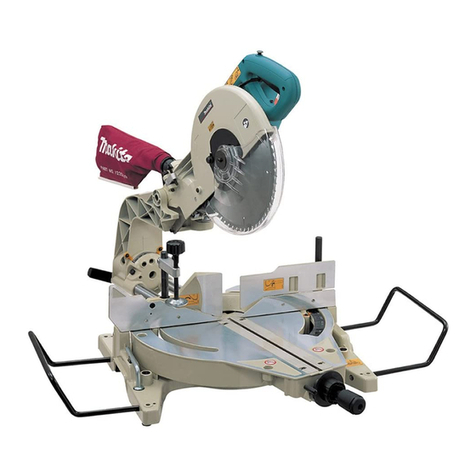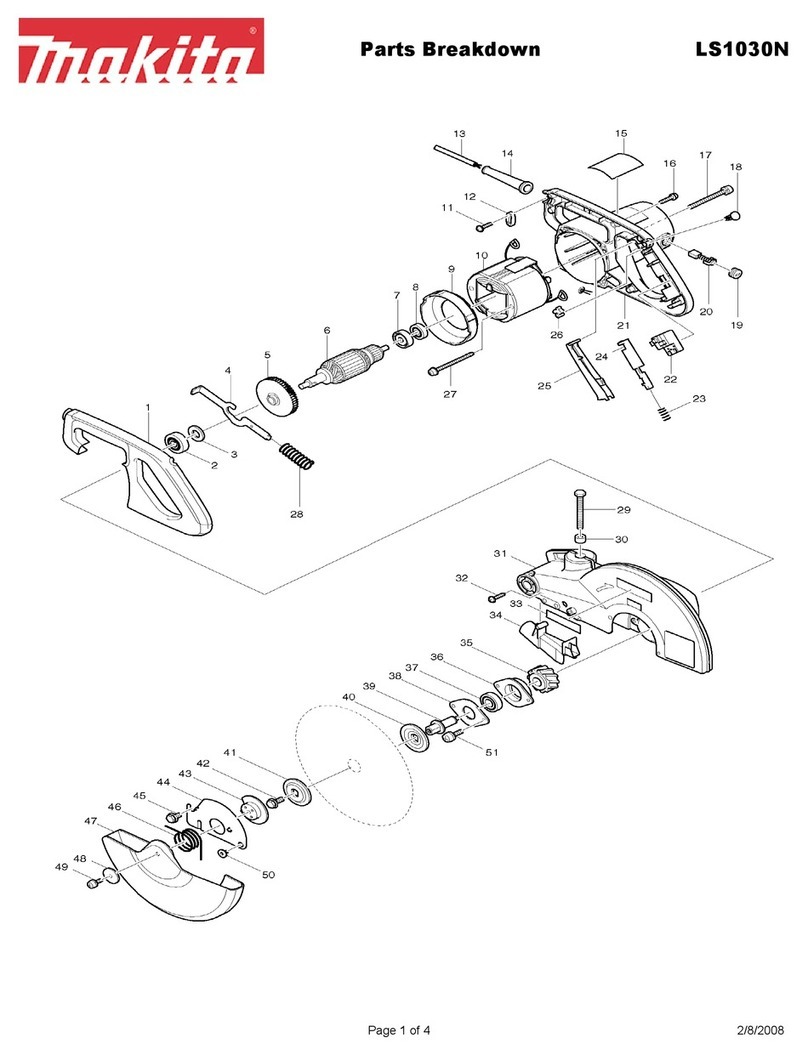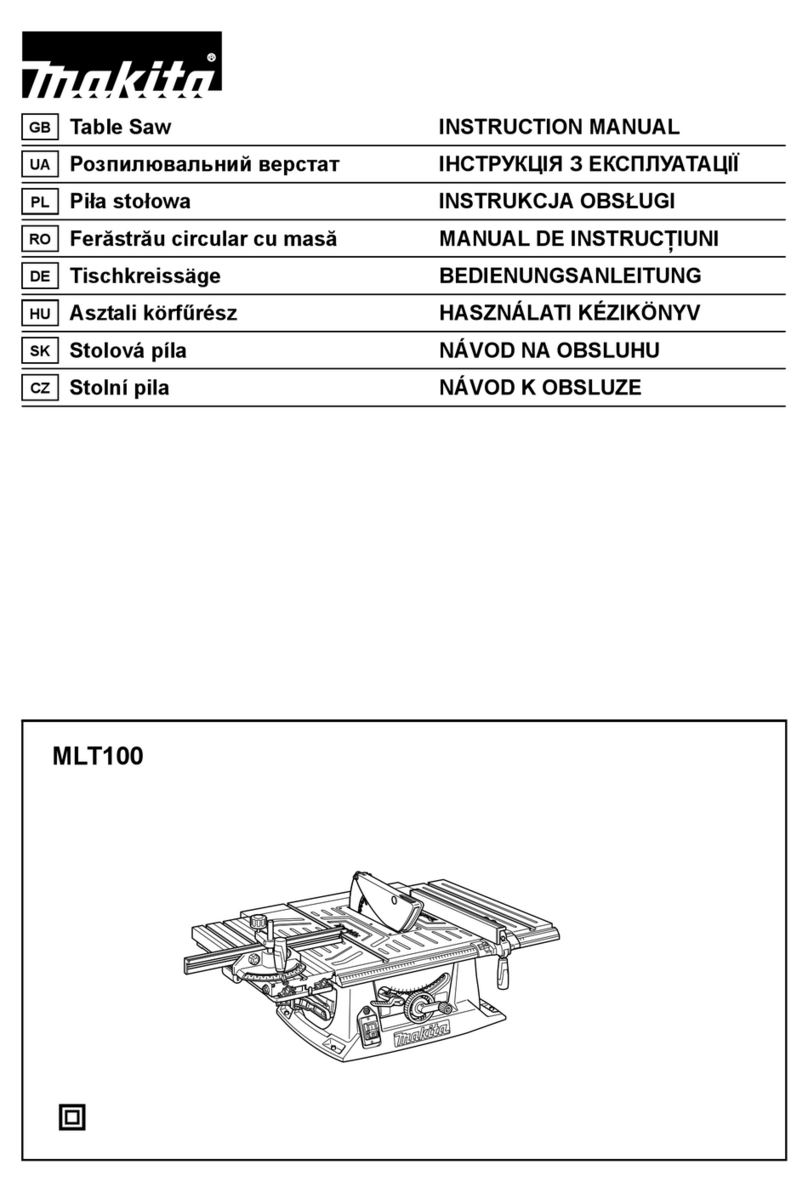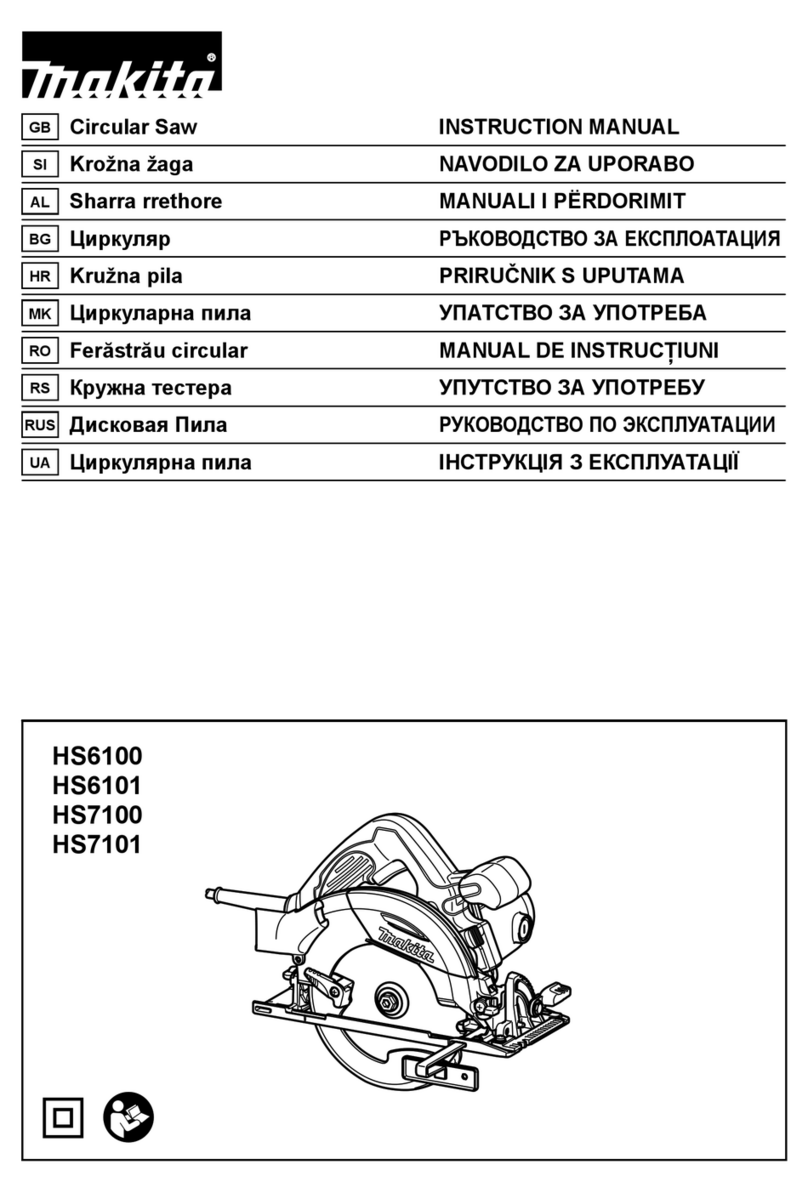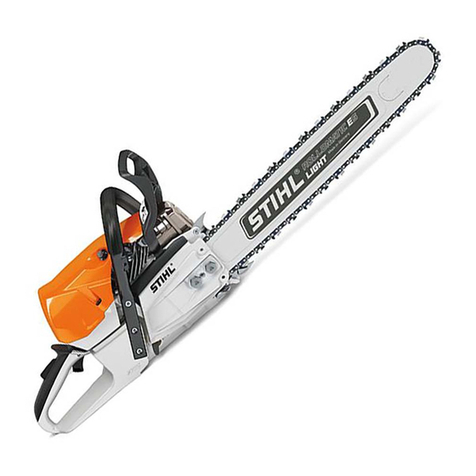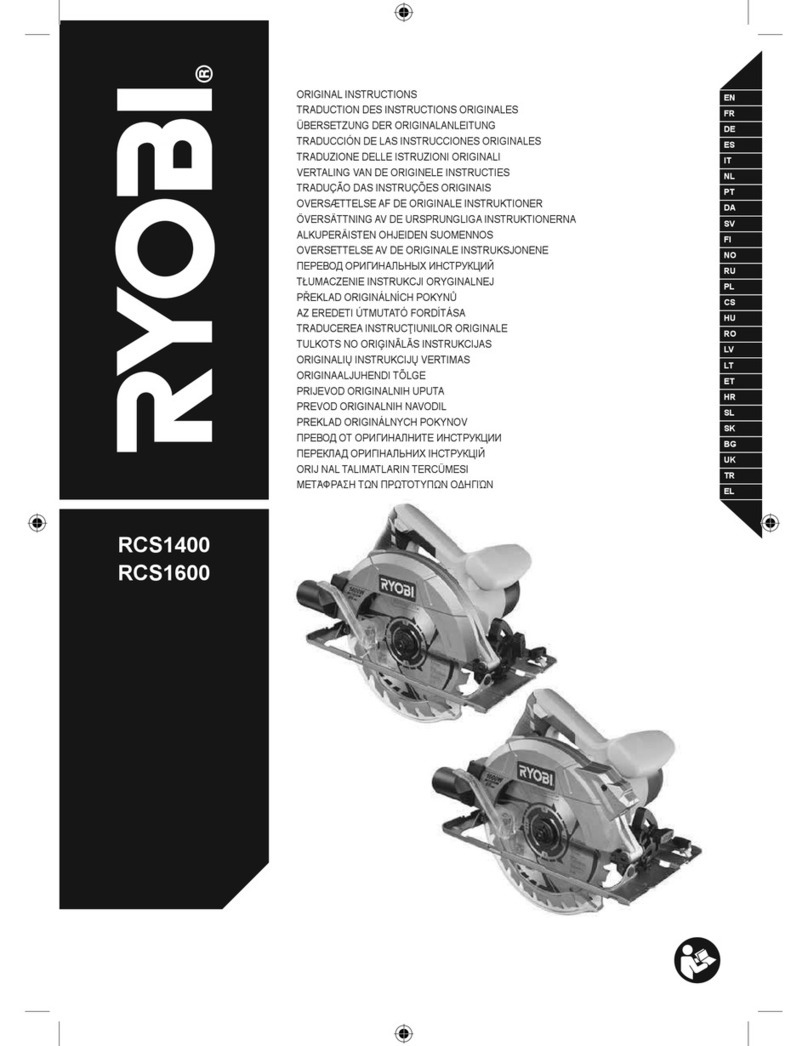
4ENGLISH
Power tool use and care
1. Do not force the power tool. Use the correct
power tool for your application. The correct
powertoolwilldothejobbetterandsaferatthe
rate for which it was designed.
2.
Do not use the power tool if the switch does not turn
it on and off. Any power tool that cannot be controlled
with the switch is dangerous and must be repaired.
3. Disconnect the plug from the power source
and/or remove the battery pack, if detachable,
from the power tool before making any adjust-
ments, changing accessories, or storing power
tools. Such preventive safety measures reduce
the risk of starting the power tool accidentally.
4.
Store idle power tools out of the reach of children and
do not allow persons unfamiliar with the power tool
or these instructions to operate the power tool. Power
tools are dangerous in the hands of untrained users.
5.
Maintain power tools and accessories. Check for
misalignment or binding of moving parts, breakage
of parts and any other condition that may affect the
power tool’s operation. If damaged, have the power
tool repaired before use. Many accidents are caused
by poorly maintained power tools.
6. Keep cutting tools sharp and clean. Properly
maintained cutting tools with sharp cutting edges
are less likely to bind and are easier to control.
7.
Use the power tool, accessories and tool bits etc.
in accordance with these instructions, taking into
account the working conditions and the work to be
performed. Use of the power tool for operations different
from those intended could result in a hazardous situation.
8.
Keep handles and grasping surfaces dry, clean and
free from oil and grease. Slippery handles and grasp-
ing surfaces do not allow for safe handling and control
of the tool in unexpected situations.
9. When using the tool, do not wear cloth work
gloves which may be entangled. The entangle-
ment of cloth work gloves in the moving parts may
resultinpersonalinjury.
Service
1.
Have your power tool serviced by a qualied repair
person using only identical replacement parts. This will
ensure that the safety of the power tool is maintained.
2. Follow instruction for lubricating and chang-
ing accessories.
Circular saw safety warnings
Cutting procedures
1. DANGER
: Keep hands away from cutting area
and the blade. Keep your second hand on auxiliary
handle, or motor housing. If both hands are holding
the saw, they cannot be cut by the blade.
2.
Do not reach underneath the workpiece. The guard
cannot protect you from the blade below the workpiece.
3. Adjust the cutting depth to the thickness of
the workpiece. Less than a full tooth of the blade
teeth should be visible below the workpiece.
4. Never hold the workpiece in your hands or
across your leg while cutting. Secure the
workpiece to a stable platform. It is important to
support the work properly to minimise body expo-
sure, blade binding, or loss of control.
5. Hold the power tool by insulated gripping
surfaces, when performing an operation where
the cutting tool may contact hidden wiring or
its own cord. Contact with a "live" wire will also
make exposed metal parts of the power tool "live"
and could give the operator an electric shock.
6. When ripping, always use a rip fence or
straight edge guide. This improves the accuracy
of cut and reduces the chance of blade binding.
7.
Always use blades with correct size and shape
(diamond versus round) of arbour holes. Blades that
do not match the mounting hardware of the saw will run
off-centre, causing loss of control.
8. Never use damaged or incorrect blade wash-
ers or bolt. The blade washers and bolt were
specially designed for your saw, for optimum
performance and safety of operation.
Kickback causes and related warnings
—
kickbackisasuddenreactiontoapinched,jammedor
misaligned saw blade, causing an uncontrolled saw to
lift up and out of the workpiece toward the operator;
—
whenthebladeispinchedorjammedtightlybythekerf
closing down, the blade stalls and the motor reaction
drives the unit rapidly back toward the operator;
—
if the blade becomes twisted or misaligned in the cut,
the teeth at the back edge of the blade can dig into the
top surface of the wood causing the blade to climb out
ofthekerfandjumpbacktowardtheoperator.
Kickback is the result of saw misuse and/or incorrect
operating procedures or conditions and can be avoided
by taking proper precautions as given below.
1.
Maintain a rm grip with both hands on the saw and
position your arms to resist kickback forces. Position
your body to either side of the blade, but not in line
with the blade.Kickbackcouldcausethesawtojump
backwards, but kickback forces can be controlled by the
operator, if proper precautions are taken.
2.
When blade is binding, or when interrupting a cut
for any reason, release the trigger and hold the saw
motionless in the material until the blade comes to
a complete stop. Never attempt to remove the saw
from the work or pull the saw backward while the
blade is in motion or kickback may occur. Investigate
and take corrective actions to eliminate the cause of
blade binding.
3. When restarting a saw in the workpiece, centre
the saw blade in the kerf so that the saw teeth
are not engaged into the material. If a saw blade
binds, it may walk up or kickback from the work-
piece as the saw is restarted.
